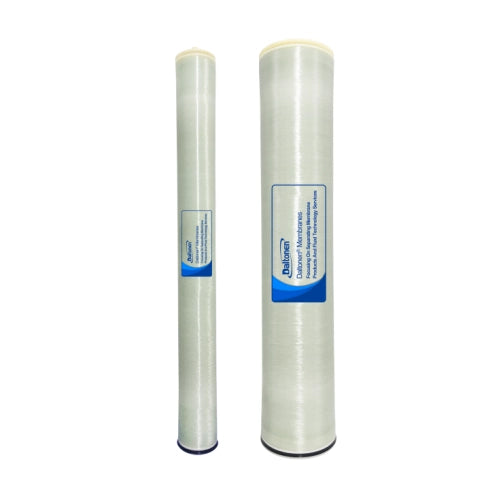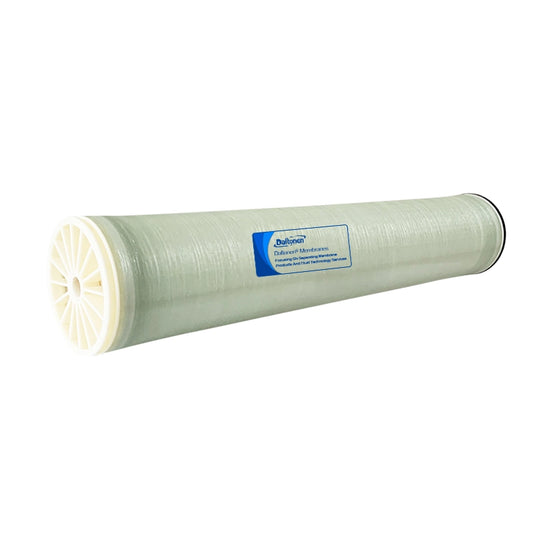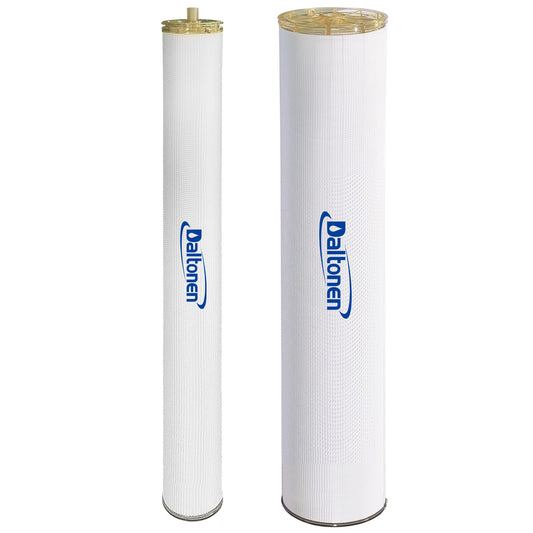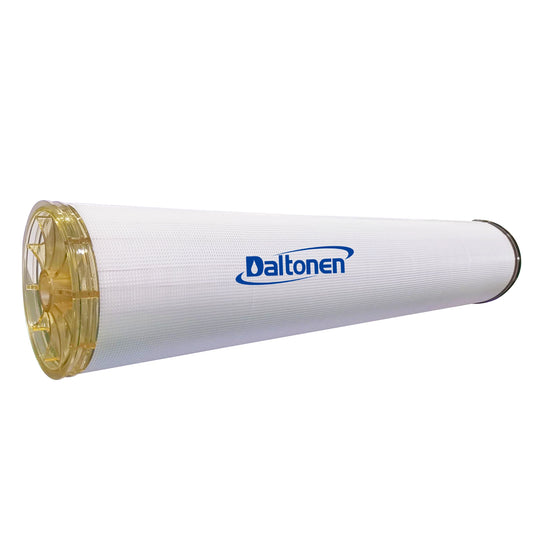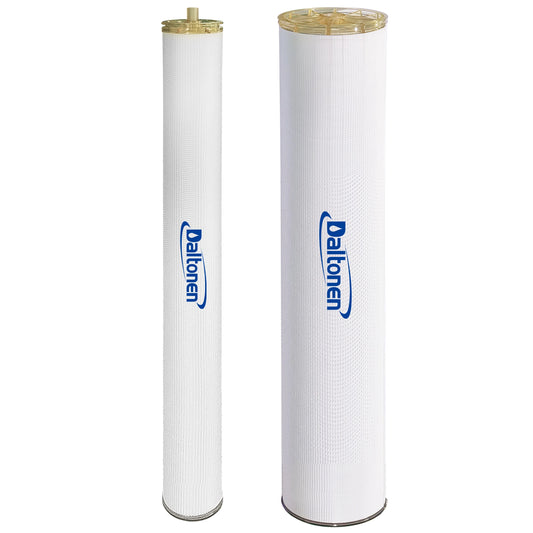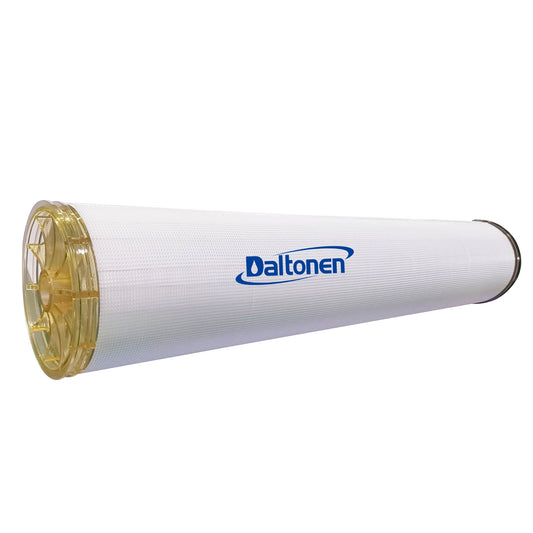Core Process System of Reverse Osmosis Membrane in the Electroplating Industry
27 Mar 2025
Core Process System of Reverse Osmosis Membrane in the Electroplating Industry
1. Quality Classification Treatment Process
Aiming at the complex components of electroplating wastewater, a "clear污separation, quality treatment" process design is adopted:
-
Cyanide-containing wastewater: Pre-treated by alkaline chlorination to break cyanide, then enters the RO system (pH 6-8, pressure 2.5MPa), with a cyanide removal rate of >99.9%.
-
Chromium-containing wastewater: Through two-stage reduction (sodium pyrosulfite + ferrous sulfate) to convert Cr⁶⁺ to Cr³⁺, combined with tubular microfiltration (TMF) pretreatment, the chromium concentration in RO concentrate can reach 12g/L.
-
Nickel/copper-containing wastewater: Pretreated with selective chelating resin, combined with anti-pollution RO membrane (flux 28LMH), the purity of nickel recovery reaches 99.5%.
-
Organic wastewater: Pretreated by ozone catalytic oxidation (catalyst loading 3g/L) + nanofiltration (NF270), the COD interception rate is 85%.

2. Integrated Membrane Process System
Three-level membrane method combination:
-
Primary: Spiral RO (recovery rate 60-70%)
-
Secondary: Disc tube RO (DTRO, recovery rate 85-90%)
-
Tertiary: High pressure RO (HPRO, pressure 10MPa) treats concentrate, total recovery rate >97% Membrane electrolysis coupling system:
-
RO concentrate enters the electrolytic槽 (current density 300A/m²), metal deposition efficiency increases to 95%
-
Case of an enterprise in Jiangsu: Nickel recovery increased from 8.2 tons/year to 15.6 tons, electricity consumption decreased by 42%
3. Key Process Parameter Optimization
| Process | Control Parameter | Optimization Goal |
|---|---|---|
| Pretreatment system | SDI<3, Turbidity<1NTU | Reduce membrane pollution index by 80% |
| RO operating pressure | 1.8-2.5MPa (normal) | Specific energy consumption<3kWh/m³ |
| Brine circulation ratio | 15-25% | Increase recovery rate to 95% |
| Cleaning cycle | Triggered by 15% increase in transmembrane pressure difference | Extend membrane life to 5 years |
4. Special Membrane Application Process
-
Acid-resistant RO membrane (pH 1-4):
-
Used for chromium plating rinse water treatment, with 99.99% chromium acid interception rate
-
Shenzhen factory application case: Chromium acid reuse cost reduced to 1/3 of new solution
-
-
Thermal RO system:
-
Preheat wastewater to 45℃ (using waste heat), increase membrane flux by 30%
-
Zhejiang project data shows: Energy consumption decreased by 22%, desalination rate maintained at 99.2%
-
-
Forward Osmosis (FO)-RO Combined Use:
-
Use high osmotic pressure of electroplating solution to drive water recovery, reduce energy consumption by 40%
-
Experimental data shows: Nickel ion reverse diffusion <0.1mg/L

-
5. Intelligent Process Control
-
Digital twin system:
-
Real-time simulation of membrane system operation status, predict pollution development (error <5%)
-
Shanghai demonstration project: Membrane replacement cycle prediction accuracy 92%
-
-
AI parameter optimization:
-
Dynamically adjust operating pressure and recovery rate based on LSTM neural network
-
Suzhou enterprise application case: System energy efficiency increased by 18%, manual intervention reduced by 70%
-
-
IoT monitoring platform:
-
Deploy 500+ sensors (pressure, conductivity, ORP, etc.)
-
Abnormal operating conditions response time shortened to 15 seconds
-
6. Resource Recycling Closed-loop Process
-
Water circulation system:
-
Rinse water→Sand filter→Ultrafiltration→RO→EDI→Electroplating tank
-
Water quality meets ASTM D5091 standard, conductivity <5μS/cm
-
-
Metal recovery chain:
-
RO concentrate→Electrolytic deposition→Vacuum melting→Electroplating raw material
-
Foshan enterprise achieved copper powder (purity 99.98%) direct supply to production line
-
-
Waste salt resource utilization:
-
Use differential crystallizer (temperature difference control ±0.5℃)
-
Separate nickel sulfate, sodium chloride, boric acid, etc. into industrial raw materials
-
7. Zero Liquid Discharge (ZLD) Process Package
A[Electroplating wastewater] --> B(Regulation tank) B --> C{Wastewater classification} C -->|Heavy metal containing| D[Chemical precipitation+Microfiltration] C -->|High salinity| E[Advanced oxidation+NF] D --> F[Primary RO] E --> F F --> G[Brine tower] G --> H[Secondary DTRO] H --> I[MVR evaporator] I --> J[Crystallization drying] J --> K[Industrial salt] F --> L[Product water tank] L --> M[Electroplating line reuse]
8. Engineering Practice Cases
-
Guangdong Hardware Electroplating Park:
-
Treatment scale: 2000m³/d
-
Process: TMF+RO+EDR
-
Effect: Nickel recovery rate 95.3%, water reuse cost 1.2 yuan/ton
-
-
Chongqing Automotive Electroplating Project:
-
Uses vibrating membrane (VSEP) pretreatment technology
-
Membrane pollution rate reduced by 65%, cleaning agent usage reduced by 40%
-
-
Japanese-funded Electronic Electroplating Plant:
-
Implements RO-ion exchange combined process
-
Heavy metal content in effluent <0.05mg/L, meets Japanese JIS K5600 standard
-
9. Process Economic Analysis
Investment composition (10000m³/d system):
-
Membrane system: 42% (including spare parts)
-
Pretreatment unit: 28%
-
Automated control: 15%
-
Auxiliary facilities: 15%
Operating cost (yuan/ton water):
-
Power consumption: 1.8-2.5
-
Membrane replacement: 0.6-1.2
-
Chemicals: 0.3-0.8
-
Labor: 0.2-0.5 Total cost: 2.9-5.0 (35-50% lower than traditional process)
Payback period:
-
Metal recycling revenue: 1.2-2 years
-
Water cost saving revenue: 3-5 years
10. Process Innovation Directions
-
Membrane material innovation:
-
Develop MXene/polyamide composite membrane to enhance anti-pollution performance (experimental flux increased by 50%)
-
Self-healing membrane coating technology to achieve automatic repair of nanoscale damage
-
-
Process coupling innovation:
-
Membrane distillation (MD)-RO combined use for high-temperature wastewater treatment
-
Electro adsorption-RO combined process for low-concentration wastewater treatment
-
-
Energy recovery system:
-
Pressure exchanger (PX) recovers concentrate residual pressure, saves energy by 30-40%
-
Osmotic power generation module, conversion efficiency reaches 15%
-
Through continuous optimization of the above process system, the application of reverse osmosis membrane technology in the electroplating industry has evolved from simple wastewater treatment to a systematic project covering resource recovery, process optimization, and energy management. In the future, with breakthroughs in intelligent control, new materials, and other technologies, reverse osmosis processes will be deeply integrated into the entire life cycle of electroplating production, accelerating the industry's transition to a circular economy model where "wastewater is a resource."
Tags:


